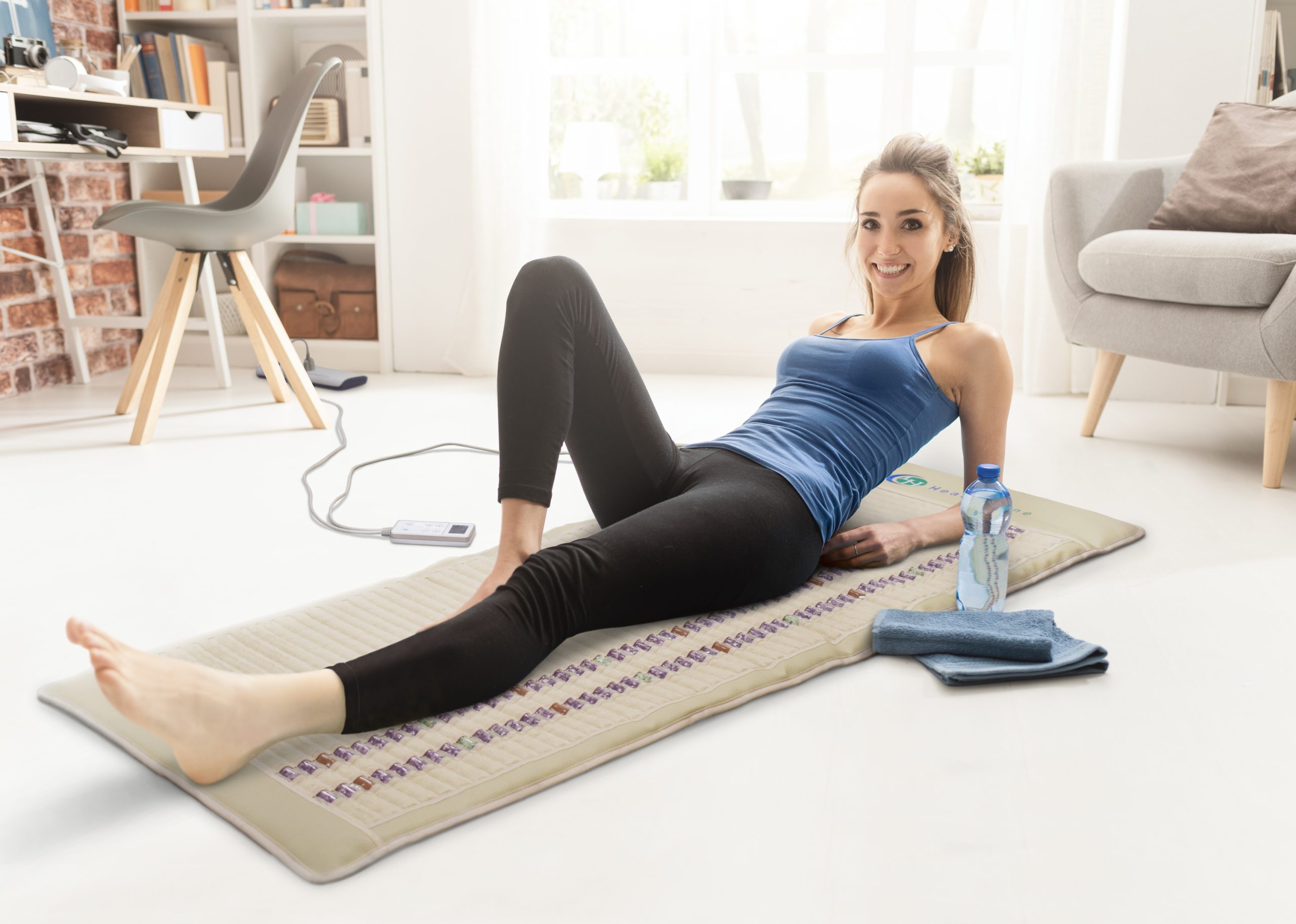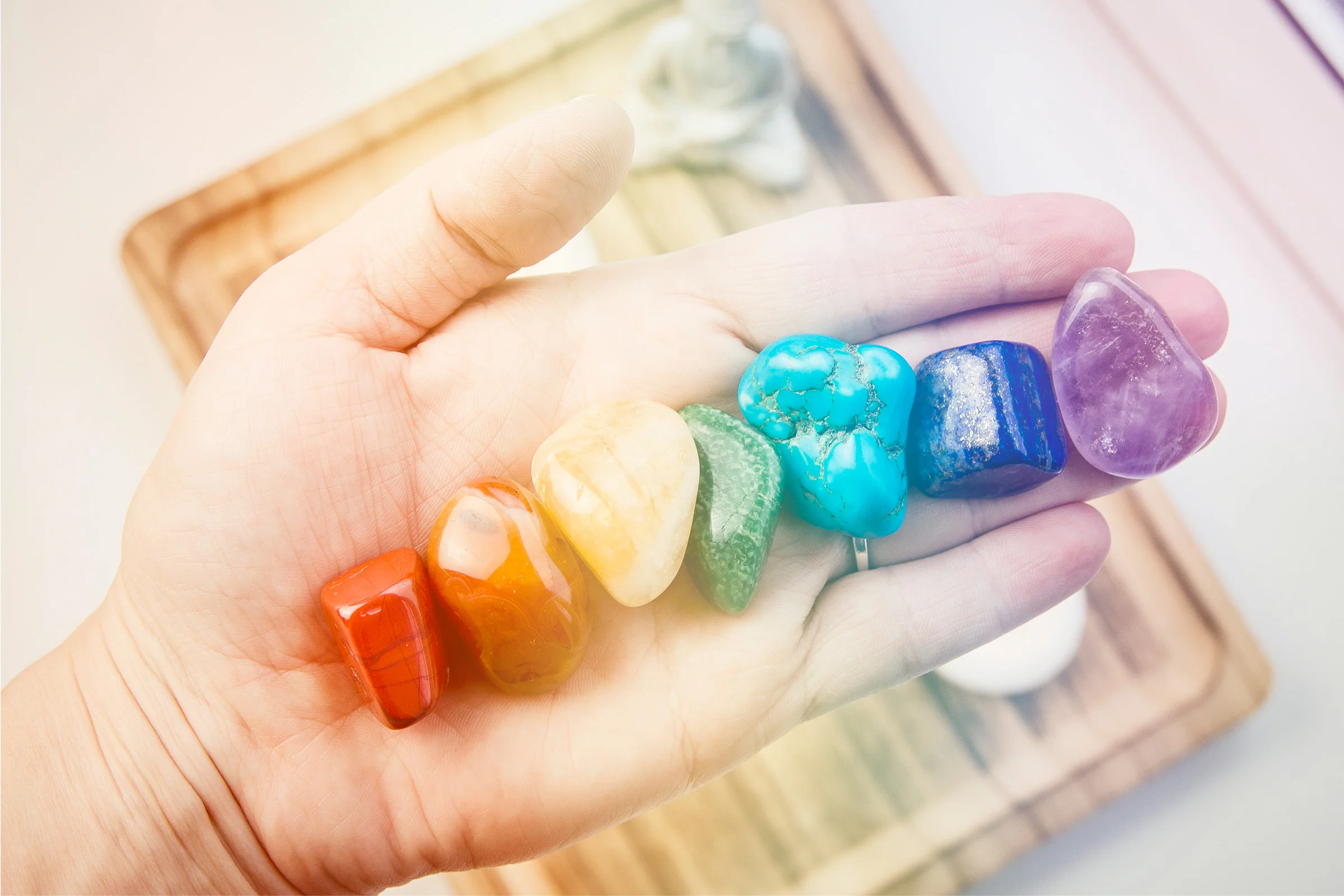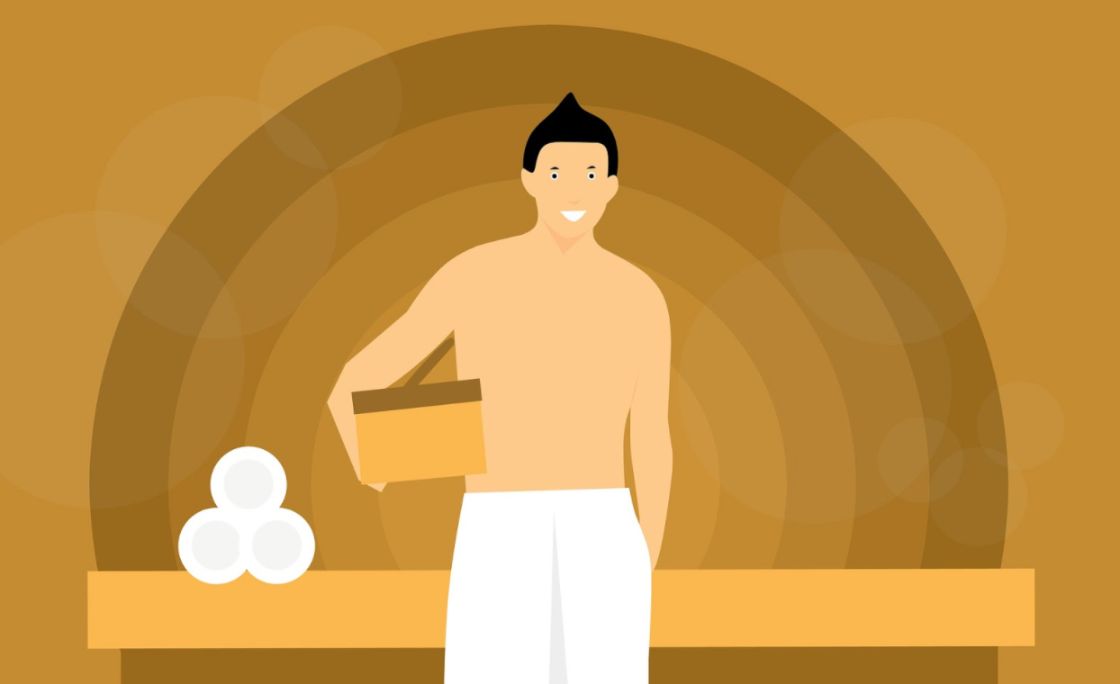None of us escapes experiencing muscle cramps, although some may experience them more frequently than others.
But whenever they happen, they don’t allow us to think of anything else except relief from their agonizing hold.
If you’d like to know how to handle this problem, you’ll be happy to know options are available to make managing muscle spasms easier.
These home remedies and other lifestyle changes can provide relief from the vise-like grip of a muscle spasm.
You may need to increase your fluid intake, especially water.
A change in your diet may also be necessary.
You may not know this, but improving your posture goes a long way toward properly positioning all the muscles in your body.
This eliminates the stress that can occur when muscles are not aligned correctly.
Also, maintaining a regular exercise routine helps relieve the onset of muscle cramps.
All of these things can produce the effective muscle cramp relief which you’d probably like to obtain as quickly and effortlessly as possible.
The two groups of people most likely to experience moderate to frequent muscle spasms are
1) those who are involved in sports and other physical activities,
2) those who are middle-aged and older.
Muscle spasms can last for a few seconds to as long as 15 minutes, and sometimes longer.
Spasms are also famous for occurring at night while sleeping (nocturnal cramps), causing inexplicable pain and a powerful disruption to the sleep cycle.
What are Muscle Spasms?
What causes muscle spasms or cramps?
Muscle spasms or cramps are uncontrolled contractions of single and/or multiple muscles.
In other words, there’s nothing we consciously do to cause this reaction.
It just happens and it lasts until the muscles say it’s over.
Cramps can begin suddenly and, within seconds, flare up into the unbearable pain that keeps us from thinking about anything else until the cramp has eased and the pain has subsided.
While spasms can happen all over the body, they frequently happen in the feet, legs and lower back.
Most people have had a “charley horse,” which occurs in the calf, quickly learned it was incredibly painful!
Muscle Spasms vs. Pulled Muscles: What’s the Difference?
As mentioned earlier, a muscle spasm is an involuntary contraction of the muscle(s).
Pulled muscles, also known as “strained” muscles, happen when the tendon (the cord that attaches muscles to bones) and the muscle to which it is attached are stretched beyond the range of their normal flexibility.
This can result from trauma from severe injury or overuse, and it can be a minor or major problem.
A minor injury, an overstretched or slightly torn muscle, can be treated successfully at home with heat, ice, and anti-inflammatory medications if needed.
In this case, the area may feel somewhat stiff, but a person still can move around and recover within a few weeks.
On the other hand, a major injury, such as a severely torn muscle, can result in a person having limited mobility, perhaps needing crutches to get around.
This type of injury can take months to heal.
Symptoms of a pulled or strained muscle are the pain while resting or moving the affected muscle, swelling, and possible bruising.
If inflammation sets in, then the effects of the pulled muscle are heightened, evolving into a more harmful condition.
People involved in sports and those who engage in rigorous and/or high-intensity exercise routines on a regular basis likely will encounter this injury.
However, it can also happen to people when walking, jumping or running improperly, lifting a heavy object, or after accidental slips and falls.
Because pulled muscles result in more serious injuries than muscle spasms, it would be prudent to see a doctor.
One of the ways to stop or control muscle spasms is stretching out the contracted muscle, which many times causes pain and soreness, but eventually, offers relief.
But pulled muscles usually will require some degree of rehabilitation or therapy that will compel you to visit a healthcare professional.
Therapeutic exercise also is necessary for to strengthen the muscle, restore movement and prevent the unnecessary buildup of scar tissue (scarring reduces the range of motion, thereby creating the possibility of repeat injuries).
In extremely severe cases, surgery also may be required to repair the muscle.
What Causes Muscle Spasms?
Certain conditions and situations are known to contribute to muscle spasms.
Since muscle mass is lost as we get older, the pressure of our weight on the remaining muscles tends to lead to more muscle spasms.
This means people who are middle-aged or older are more susceptible to this problem.
However, poor blood and fluid circulation and inadequate diet also can contribute to recurring muscle spasms.
Muscle spasms also can accompany medical conditions such as kidney failure, alcoholism, and restless leg syndrome.
Muscle spasms are caused by 12 conditions:
First, an electrolyte imbalance, which happens because of the loss of necessary fluids (dehydration) can lead to the onset of muscle spasms.
When prolonged loss of bodily fluids occurs, such as during illness — through sweating, diarrhea and high fever — electrolyte imbalance will follow if fluids are not immediately replenished.
- A deficiency in the following nutrients also plays a significant role: potassium, magnesium, calcium, chloride, and sodium (see below for suggested diet). Besides helping maintain a healthy nervous system, these nutrients also help maintain muscle function.
- Activities that include repetitive motion, such as rowing, baseball, basketball — or even sitting in awkward or uncomfortable positions for long periods of time — also contribute to muscle spasms.
- Standing for long periods of time on a hard floor causes muscle fatigue, which can lead to spasms. Then add wearing high-heels or inadequately-fitting shoes, and you have the perfect recipe for the onset of muscle spasms, especially while sleeping at night. Preventing this is simple: when you must stand for long periods of time, such as on your job, make it a point to sit down periodically to rest your legs. Also, take a pair of tennis shoes or other comfortable, flat shoes to change into to relax your feet and legs when wearing high heels or other uncomfortable shoes.
Home Remedies for Muscle Cramps
When muscle spasms hit, our first thought is to find immediate relief.
The following are a list of suggested home remedies for leg cramps that can provide muscle spasm relief:
Massage
When a leg muscle spasm hits, most people will instinctively jump up and walk around and indeed experience some relief.
When that automatic urge strikes, stand up and walk swiftly around the room (sometimes the cramp is so excruciatingly painful that you may find yourself hopping around instead of walking!).
The intention is to get more blood to circulate through the affected area.
Once some relief is felt, start gently stretching and massaging the muscle as it continues to relax.
You can include shaking the leg in between walking, stretching and massaging it.
Heat and Cold Compresses
If stretching, massaging and walking doesn’t do the job completely, apply a heat compress to the area (a towel submerged in hot water will do) and leave on for 15 minutes until the muscle shows signs of further relaxation.
This will help to bring blood circulation to the area and relax the muscle.
Reheat and reapply several times if necessary.
If the spasm continues to periodically repeat itself, apply a cold compress (a towel wrapped around a couple of ice cubes) for 15 minutes at a time, reapplying as often as necessary.
Doing this as part of the process for muscle cramps treatment will help with the following: 1) it causes the muscle to relax back into its natural state reducing the chance of inflammation; and 2) it reduces pain, swelling, and soreness by producing a numbing sensation.
Alter Your Diet
As much as possible, limit your intake of processed foods, which are any foods that have been altered in some way during preparation for sale (i.e., frozen, canned, baked and dried).
While not all processed foods are bad for you, you have to watch out for high levels of salt, fat, and sugar which are usually included in frozen meals, junk foods, fast foods, and foods cooked in certain restaurants.
Buy fresh food instead and cook it at home.
Include plenty of fruits and vegetables: leafy greens (kale, collard, turnip, etc.), cruciferous vegetables such as cabbage and broccoli, and starchy vegetables such as sweet potatoes and squash.
Along with bananas, also pick from the wide variety of colorful fruits that are available.
For meats, be safe and maintain a basic diet of poultry (chicken and turkey) and fish high in omega-3 and low in mercury (i.e., salmon, tuna, tilapia).
Good sources of potassium are bananas, grapes, oranges, dates, apricots, grapefruits, pork, and lamb.
Incidentally, the above food selections will play a substantial role in reducing the chance of developing an electrolyte imbalance.
Exercising
Staying active with regular exercise will help to retain some of that muscle mass before it’s lost in the aging process.
However, exercising should be done regularly to achieve the utmost benefit and carefully to prevent the onset of a pulled muscle.
There should be a warm-up period before and after your routine 1) to increase the required blood circulation to the muscles and the rest of the body before exercising (note: this action will prevent possible overstretching and tearing of muscles that are not yet flexible enough to withstand the exercising), and 2) to reduce soreness and restore movement after exercising.
You should spend approximately 10 – 15 minutes doing stretches before and after exercising.
Also, remember that vigorous workouts demand that you get plenty of rest as part of the replenishing process.
Focus on Your Posture
Correct posture plays an important role in keeping the body properly aligned and healthy, thereby maintaining more elasticity in the muscles.
When walking and sitting, keep the body in a straight position without slouching while sitting and leaning too far forward or backward while walking, all of which causes undue stress on the muscles.
Use Epsom Salt
While Epsom salt is not recommended for use by people who have diabetes, high blood pressure or a heart condition, for others, soaking for 20 minutes in a warm bath containing 2 cups of Epsom salt mixed thoroughly in the water can do wonders in the way of muscle cramps treatment.
Treatment with Clove Oil
Clove Oil also referred to as clove bud, has numerous medicinal properties that can be used for myriad health issues.
It can be ingested through food or applied topically (on the surface) and it’s known primarily for use in dental care.
However, because it contains those much-needed minerals of calcium, potassium, and sodium, it can be beneficial as another one of the home remedies for leg cramps by applying it topically to the cramped muscle.
It contains anti-inflammatory properties that decrease the chance of inflammation and swelling in the muscle and it also helps to alleviate pain by numbing the affected area.
Warm up a small amount of clove oil and then rub it over the muscle in a massaging fashion.
Repeat as needed.
Keep in mind that clove oil is very strong and MUST be diluted before ingestion or application.
Once familiar with clove oil and its effects, you can either trust your judgment as to how much dilution is needed or check the directions given on the bottle.
Blackstrap Molasses
If what causes leg cramps is the result of a calcium/potassium deficiency, then blackstrap molasses being an excellent source of these 2 minerals can also help to ease leg cramps.
Try mixing a tablespoon of this molasses in a glass of warm water or milk to sustain strong muscles and lessen muscle spasms.
You can drink this mixture regularly, perhaps once a day, without fear of it adversely affecting the body.
Specific Exercises for Relief of Muscle Spasms
For those of you who are not into exercising on a regular basis, the following are a few exercises that can be used specifically for muscle spasm relief that should be a great help in relieving pain and inducing flexibility in the leg muscles: first, while sitting on the floor and keeping your legs straight and stretched out in front of you, reach forward and grab hold of your toes and pull them toward you.
If you’re unable to reach your hands to your toes, use a towel to wrap around your toes and pull on the towel.
About 5 minutes of stretching this way (or even doing 10 stretches, stop, 10 more stretches, stop) should be sufficient when done with the other exercises.
Second, using the wall for leverage, step about 2 feet away from the wall and place both hands on the wall at shoulder height.
Bring one of your legs up to about 1 foot from the wall and bend it, while the other leg remains straight and 2 feet away.
Lean into the wall enough to feel a tightening of the muscles in the back leg and then come back to a relaxed position.
Continue this about 10 times and then switch to the other leg and repeat.
Third, using a chair, sit with your legs in at a right angle in front of you, with your toes pointing forward, your knees bent to form a right angle and keeping your knees aligned with your hips.
Proceed to turn your feet outward until the heels are touching and the toes are facing in opposite directions (note: don’t turn toes out so much that you begin to feel too much of a stretch or strain on the ankles).
Lift the toes as high as they can go while keeping the heels firmly grounded.
Once you feel the tightening of the calf muscles and the tendon connecting the heels to the calf (“Achilles Tendon”), release the toes.
Repeat this action 10 times and rest the feet and legs.
This exercise can be done several times a day.
Bathing
Bathing, which at one time was a regular occurrence in households, has almost been rendered obsolete.
Showering has become the main method of cleaning ourselves, mainly because it’s more convenient and less time-consuming.
However, besides being a cleaning ritual, bathing served other purposes as well.
For instance, a hot bath was great for increasing blood and fluid circulation in our bodies, thereby serving as a viable muscle relaxant.
It also helps with relieving pain and soreness.
These outcomes alone will help tremendously with the cessation of muscle spasms so if you’re one of the people who suffer from frequent muscle spasms, try soaking in a hot bath twice a week and see if this brings any relief to your aching muscles.
Shower
If soaking in a hot bath doesn’t work for you, then you can make use of a hot shower if you’re willing to devote more time to showering than is usually given: first, stand under the shower allowing the hot water to race over the entire body for at least five minutes.
Allow extra time to let the water run over those sore leg muscles that may have been recently plagued with muscle spasms.
Second, begin washing using a massaging method as you soap up your body.
Using circular movements, think “massage” as you continue to soap up.
Third, rinse again like you did before washing, allowing the heat of the water to sink into the entire body, again focusing on those restless, aching leg muscles.
This kind of showering is therapeutic in nature: you’re allowing the heat of the shower to be absorbed by the body and using the rush of the water to “pound those muscles into submission”.
It should take 25 – 30 minutes to complete.
Beware Cold Weather
Cold weather can also be an enemy to muscles that are exposed to it as it causes muscles to contract, not to the degree of causing cramping but predisposing the muscle to cramping.
Therefore, you should wear knee- or thigh-high leg warmers outside when appropriate during the fall and winter months.
Also, if you feel it’s necessary, wear anklets or knee-high socks at night and during bedtime.
Conclusion
The important thing to remember is the majority of muscle spasms can be treated at home using some of the methods mentioned in this article, with an expectancy of complete healing within a couple of weeks.
To deal with subsequent pain and soreness, it’s okay to take over-the-counter non-steroidal anti-inflammatory drugs (NSAIDs) such as ibuprofen (i.e., Advil) or naproxen sodium (i.e., Aleve). Acetaminophen (i.e., Tylenol) is also appropriate for use for muscle cramp relief.
Hopefully, this article was able to supply you with useful information regarding the care of muscle spasms.
Keep in mind, however, that each individual is different so it’s best to be cautious when considering the exercises suggested and remember to immediately stop if you experience any discomfort or pain you believe to be harmful.
Also, when using the information given here, learn how to discern if your situation can be handled using a do-it-yourself remedy, or whether your condition warrants consulting with a doctor.









3 comments
Very important information. Thanks many. Look forward to hearing more.
Your info is very useful. I really appreciate invaluable info. Thank you
Thank you so much for this much needed information i will give it a try anything to help this pain from musle spasms